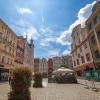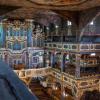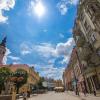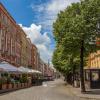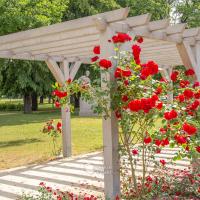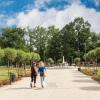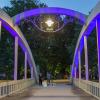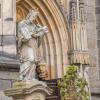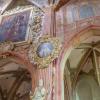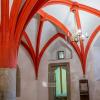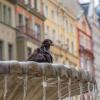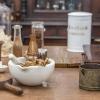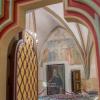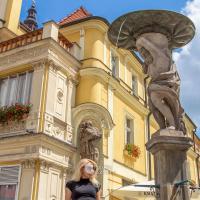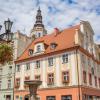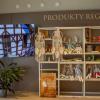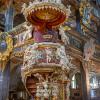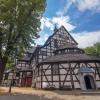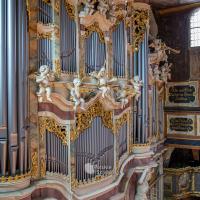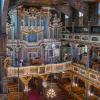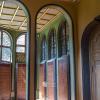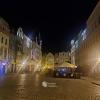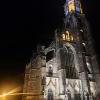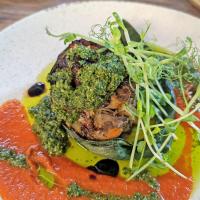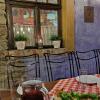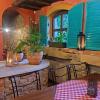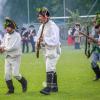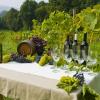Świdnica's best attractions. What is worth visiting in this historic city?
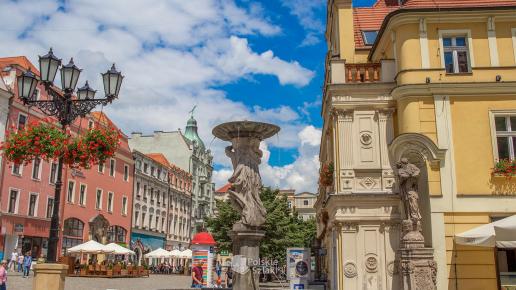
Świdnica is a beautiful, centuries-old city with a rich tradition and 700-year history. In the Middle Ages, it was the second largest and most important centre in Silesia, after Wrocław. To this day, traces of this splendor have been preserved in the city, in the form of monuments, including Gothic ones, which are the most important attractions of Świdnica. We are delighted with the Old Town with its beautiful, unusual market, for which the Lower Silesian cities are famous.
Świdnica is located picturesquely on the Bystrzyca River, about 50 km from Wrocław and Kłodzko and 20 km from Wałbrzych. Today, the A4 motorway runs in the vicinity of Świdnica. All this, along with nicely revitalized parks and delicious restaurants, makes you want to come here and taste Świdnica!
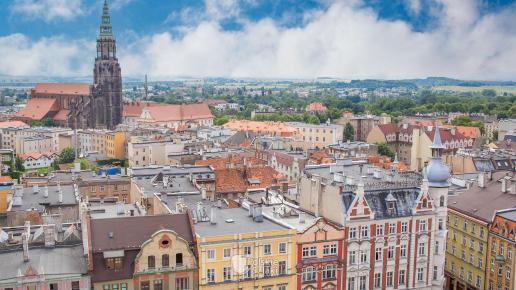
Experiences in Świdnica
The true power of Świdnica are its monuments, extremely valuable and unique on a national scale, but the city will also surprise you with interesting and nicely flowered parks and squares. We have walked along Świdnica and checked many attractions for you, and as a result we have described them in the form of a guide to the best attractions of Świdnica. First, I present you with a list of these places, and below I describe them in more detail.
And if you want to find an even more detailed description, click on the linked (blue) name of the experience, which takes you to the detailed description. At the bottom of the text you will also find a map of Świdnica with selected attractions of the city. Discover the best attractions of Świdnica! If you're interested in a more detailed description of a specific experience, click the blue, linked experience name. Below the text you will find a map with marked attractions of the area!
1. Church of Peace in Świdnica
This is the most important attraction of Świdnica! Thanks to the famous Church of Peace, the city's name appears on the prestigious UNESCO World Heritage List. This church is amazing, created with passion and faith, burdened with the terms of the Treaty of Westphalia, to be built only from impermanent materials - clay, straw and wood, not only preserved to this day, but it is a real gem and at the same time the largest wooden temple in Europe! It stood outside the city walls of Świdnica in 1657 and has been a delight for 370 years.
In fact, it is a whole complex of buildings, which includes, among others, the Baroque entrance gate to the Peace Square, the building of the former presbytery, the beautiful building of the former high school, the freestanding bell tower or the historic cemetery. I was also captivated by Café 7 Heaven, which is located in front of the church, in the former guard house. And these small, colorful doors that adorn the wonderful façade of the Church of Peace.
Interior of the Church of Peace
It is a delightful building, but let's also look inside, because it takes your breath away. Currently revitalized, it is accessible to tourists and successfully pleases their eye. You enter the interior of the temple atypically, because through the sacristy, where there is a Baroque baptismal font from 1661, which was founded by 6 families of Świdnica and a glazed Baroque wardrobe. We were lucky to be guided by the pastor himself, a great guide and a man. He talks about the church with great passion and humor.
It takes a long time to write, but a few elements deserve special attention here. The oldest are benches, some are still from the 17th century, others were replaced in 1902 in the same way as the old ones. The Great Organs, created laboriously in the years 1666-69, are valuable and old. They are impressive. Much smaller are the so-called Small Organs exhibited over the altar in 1695, because these Great Organs often broke down.
And speaking of the altar. This miracle by August Hoffman was created in 1752, on the 100th anniversary of the Church of Peace. It has the form of an open colonnade and you can stare at it for a long time. The main scene shows the baptism of Christ in the Jordan River.
It is best to see it with your own eyes, as well as an ornate pulpit by the same author and paintings covering the entire temple, additionally decorated with epitaphs. It is also planned to renovate and make available the empors running almost around the temple. Thanks to them, the Church of Peace in Świdnica offers several thousand seats. It has been on the UNESCO List since 2002.
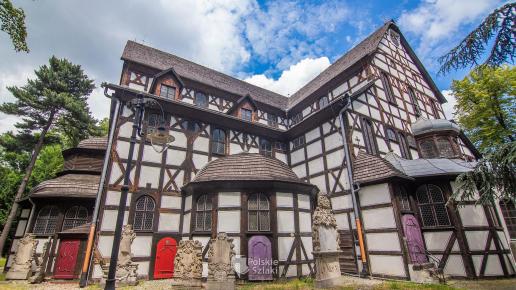
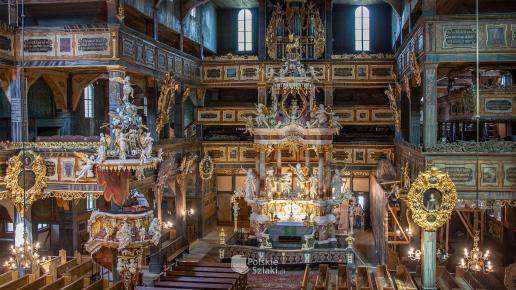
2. Market
The square in Świdnica is the most important square in the city, quite large, and at the same time beautiful and very charming. In every year of the market, there is a baroque stone fountain. It is interesting that previously these were wooden chests used as drinkers for horses. The water was supplied here by a wooden pipeline from a water tower outside the city. The Holy Trinity Column from 1693, made of red sandstone, also attracts attention on the market.
Some of the tenement houses are very beautiful and decorative, e.g. the "Under the Head of St. John the Baptist" (Rynek 15), the corner one with the Figure of Hermes (ul. Grodzka 1), the von Hochberg tenement house (Rynek 25), the "Under the Golden Goose" (Rynek 29) or the "Under the Golden Crown" tenement house under the number Rynek 7. At the Market Square, you can also see the unique tenement house "Under the Golden Griffin" at ul. Łukowa 1. It dates back to 1379, which is really amazing. An inscription on her Renaissance portal reads "Everything we have is a gift from God."
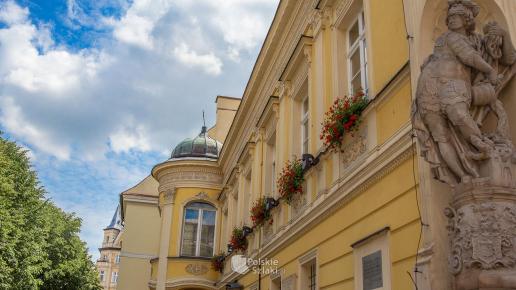
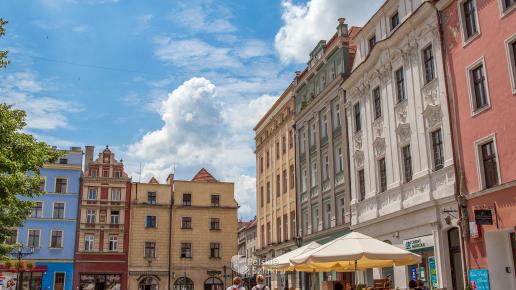
3. Town Hall from the Museum of Former Merchants
In the middle of the Market Square in Świdnica, there is a great Town Hall, old, because the beginnings date back to 1291. Initially, it was a Merchant's House and traces of Gothic merchant's houses can be found here to this day, visiting the Museum of Old Merchants decorated in the interiors of the town hall. In addition, you will see exhibits related to the history of trade - the decor of pharmacies, inns, old weights, counting machines or pilgrimage canteens and mugs, because once Świdnica used to be a beer.
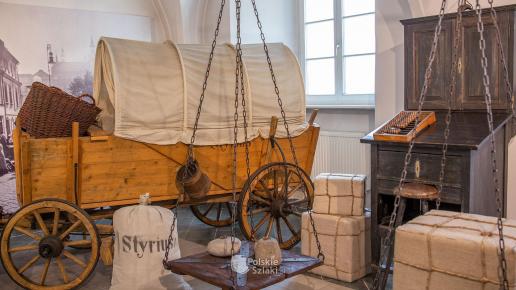
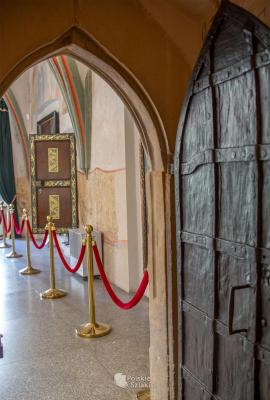
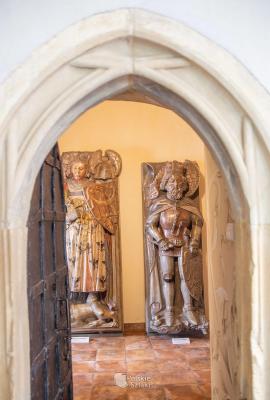
4. Town Hall Tower in Świdnica
The Town Hall Tower, accessible to tourists, is one of the newer attractions of Świdnica, allowing you to admire the beautiful panorama of the city and the area with Ślęża. Even Wrocław's Sky Tower can be seen from here on clear days. The tower at the town hall stood in the 13th century, and later it was expanded. When the houses around the tower were demolished, its structure was violated and the tower collapsed.
This took place in 1967. It was rebuilt only in 2010-12, while maintaining its old form. Tourists can use two observation decks, one built-up with windows and the other outdoor. The first one can be reached by an elevator, the second one has to be reached by two floors of stairs.
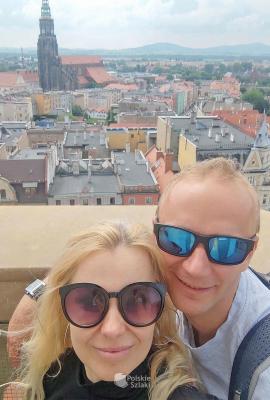
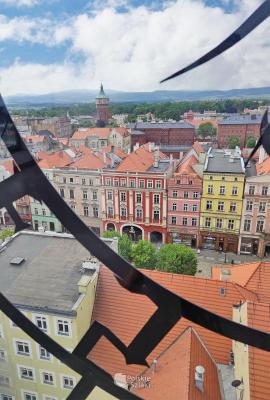
5. Holy Trinity Column
In 1693, at the northern frontage of the Market Square, an impressive column of the Holy Trinity was erected, funded by the starost of Świdnica-Jawor - Jan Joachim Michał von Sinzendorf. It was a symbol of the Reformation, as were other Holy Trinity columns in neighboring Silesian cities. This interesting slaughterhouse is made of sandstone, at the bottom it shows three angels, while the top is decorated with a sculpture of God the Father and Christ, while the Holy Spirit is symbolized by a brass dove.
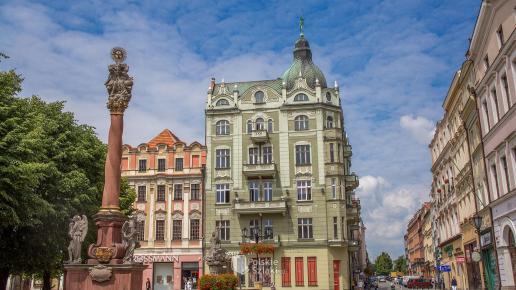
6. Cathedral in Świdnica
St. Stanislaus and St. Wenceslaus Cathedral in Świdnica is impressive and huge, even bigger than St. Stephen's Cathedral in Vienna or St. Vitus Cathedral in Prague! It is distinguished by an extremely high, soaring tower, one of the highest in Poland! He is 101.5 meters tall. The cathedral is the oldest and most valuable monument of the city, entered on the list of Monuments of History. This parish was first mentioned in a document from 1250, but the Romanesque church of that time was not a large temple.
And what is the history of the current cathedral? The present church began to be built around 1330, during the time of Prince Bolek II the Little, and its construction lasted until the end of the 15th century. It ended in 1488. An interesting fact is that there were 77 gothic altars here at that time! The most beautiful was the altar of the Dormition of the Blessed Virgin Mary from 1492, on the Bourgeois Choir, preserved to this day. It is a wonderful pentaptic or cabinet altar consisting of a central wardrobe and four wings. In the still endless tower hung 9 bells - the largest Susanna weighed about 5 tons!
And nowadays, the decor is very impressive, although mainly Baroque, it still hides gothic elements, such as large entrance portals to the cathedral or a gothic window measuring 6 x 18 meters- the highest one in Lower Silesia, rising 30 meters from the ground. Its area is over 100 square meters. In the cathedral you will see many huge paintings, in ornate, baroque frames. The most famous is the Image of Our Lady of Świdnica from the 15th century.
The most impressive, however, is the colossal Baroque high altar from 1694, very ornate and impressive. The author is Johann Riedel, who worked on the altar for 4 years ! And did you know that this place was already a place of worship in prehistoric times? Numerous artifacts found here in 1841 speak of it. Among them were the figures of Roman deities Priapus, Apollo and Isis. They probably come from the period of the 1st-3rd century AD.
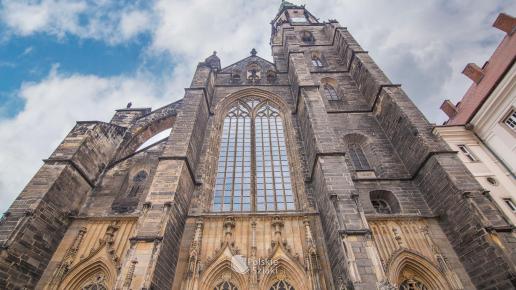
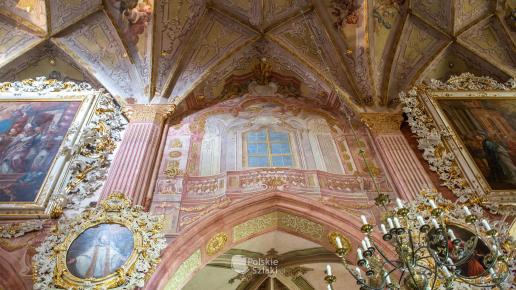
7. Tenement house at Grodzka 1
It is a beautiful and very impressive Art Nouveau tenement house, standing in the corner of the Market Square and Grodzka Street, hence in the pre-war period it was sometimes called the "Corner of Bohm". Previously, there was a baroque tenement house here, but in 1904 the building was purchased by Berthold Bohm, who ordered its demolition and in the same place built his new tenement house, which significantly exceeds the neighboring buildings to this day.
During the construction, coins from the Thirty Years' War were discovered, as well as an unknown level of cellars. The building on the roof has gained an unusual dome, crowned by the mythological figure of the god Hermes. It is a symbol of trade and commerce, and it was this occupation that the builder of the tenement house was associated with. In addition, it was also a symbol of the Masonic lodge and stood higher than all Christian symbols in the market square and in the city. An interesting fact is that in the 1990s Of the twentieth century, a man climbed to the top of the tenement house and put Hermes' panties on.
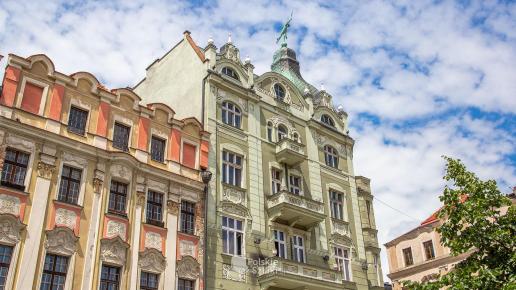
8. Central Park in Świdnica
In the center of Świdnica, it is worth visiting the Central Park, recently very nicely revitalized. It has thus become an interesting attraction of Świdnica, which can also be visited calmly and safely in the evening, because it is fantastically illuminated. A beautiful fountain, pergolas, magnificent flowers, a bridge and picturesque water reservoirs, on which gondolas once swam, are cool attractions that make walking here a pleasure. We also had a very cool Slavic Ecopicnic on the occasion of Midsummer Night.
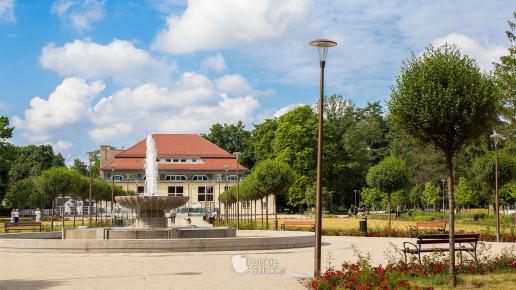
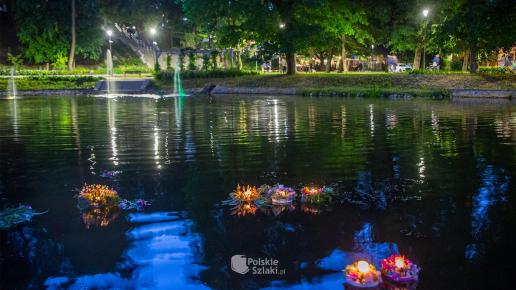
9. Rose Garden
The Rose Garden is another very nicely revitalized place in Świdnica, which until a few years ago concentrated the Świdnica "element", and today in summer delights with a colorful flower and a gushing fountain. You can also sit by the pergola. Of course, the name obliges - the Rose Garden (Rosengarten) allows you to admire roses, the most beautiful are those grafted on the trunk, in the form of small, spherical trees, sprinkled with colorful heads of budding roses. It is worth stopping here for a moment on the way from the Central Park to the Old Town.
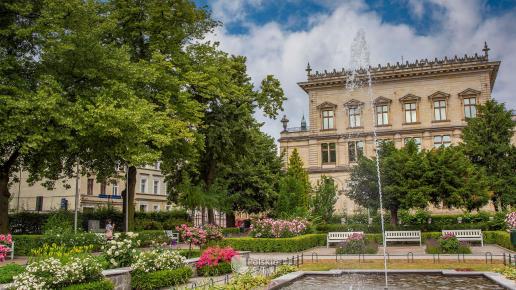
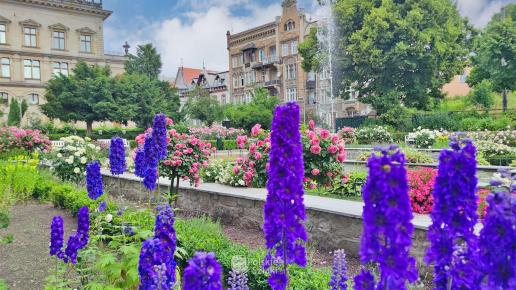
10. The Red Baron's Plane
In Sikorski Park, you can recently see a replica of the famous red plane. This is Fokker Dr. I, who was flown by Manfred von Richthofen, called the Red Baron for this reason. He came to Świdnica from Wrocław and lived with his parents in a nearby villa, and also attended the Evangelical Gymnasium in Świdnica. He later gained world fame as a great aviator and fighter ace during World War I, when he shot down 80 enemy aircraft.
The Red Baron has become a legend and even an element of pop culture. The unusual war exploits of Manfred von Richthofen became the canvas of the 2008 biographical film "Der Rote Baron" directed by Nikolai Mullerschon, in which the title role of the Red Baron was played by German actor Matthias Schweighofer.
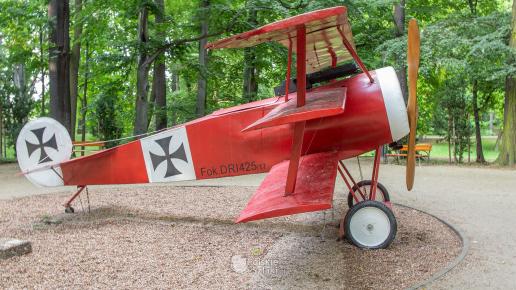
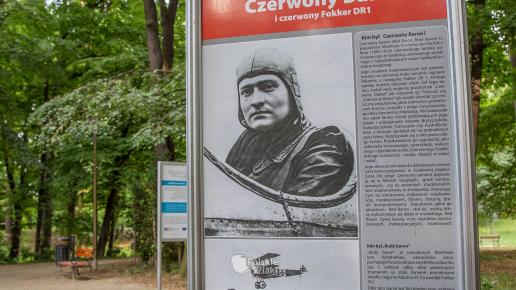
11. Wild boar in Świdnica
Wild boars in Świdnica have taken over Franciszkańska Street. It is a very pleasant, nicely flowered and revitalized square, where a group of wild boars and a chest are located. Why wild? This animal appears in the coat of arms of the city and is treated as a symbol of Świdnica, and the chest is not random and quite ordinary.
It is a memory chest! In 2013, numerous souvenirs were placed in it, which will be a gift and valuable information for Świdniczans. The chest is to be opened after 100 years! This substantial sculpture is very popular among locals and tourists, it is cast in bronze, weighs 1.2 tons and has dimensions of 160 x 406 cm. The largest boar here is just over 100 cm tall.
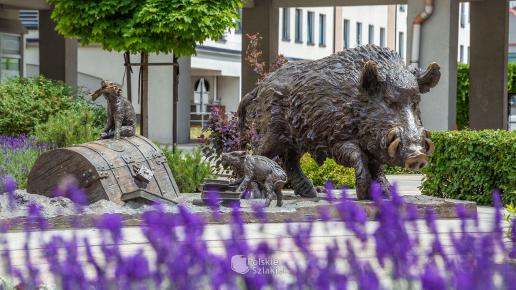
12. Train station
Although the railway to Świdnica was brought around 1845, it was not introduced to the city itself at that time, because it was still a fortress at that time. The railway line ended at the station at the current Kanonierska Street. It was not until 1855 that it "entered" the heart of Świdnica and a year later, in 1856, the first station, still small and built in the Prussian half-timbered style, was built at Dworcowa Street.
The present building of the railway station was built in 1903-05, in the style of a Russian palace. Interestingly, in 1880, the heir to the Prussian throne, Prince Frederick (later Emperor Frederick III), stopped at the station in Świdnica, and 10 years later a train with Emperor Wilhelm II passed by this station.
13. Shitting Guy in Świdnica
The Shitting Bloke, also called Bolek the Thinker or Srajludek, is an unusual sculpture exhibited today at the exit road to Żarów, near the Sewage Treatment Plant, in the north of Świdnica. A bit controversial, it arouses various emotions, but most often it causes a smile on the face 🙂 It must be admitted that it is unique and memorable. Tourists like to take pictures with it.
Srajludek was most likely created in the 1930s And originally stood in the vicinity of Bokserska Street, at the former Zakład Wodociągów Miejskich. And what does this sculpture represent? A man musing on the throne in the prime of his life, smoking a pipe. The creator of the sculpture and his artistic intention is unknown, probably it is a reflection on his life 🙂
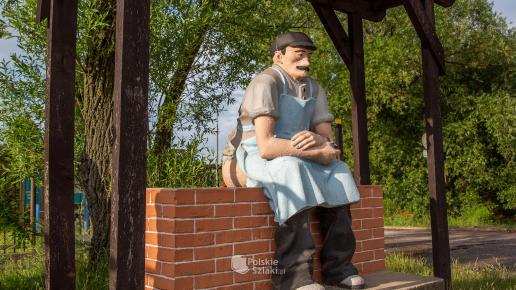
14. Water Tower
The authentic water tower in Świdnica, dating back to 1877, is an interesting technical monument, which today remains private property and houses the extremely tasty and atmospheric Tower Restaurant, including Italian cuisine. The loft design and interesting architecture of the building make the place unique.
In the past, this water tower was designed to raise the water pressure so that it could be delivered to all buildings in the city. Water was distributed via a pipeline from the so-called Lower Town, where a pump station and several deep wells were erected. The creator of this ingenious project was an engineer of Jewish origin - Moritz. In the past, the tower was also used for astronomical observations. In 1902, the so-called Thick Tower was raised by an additional storey and thus gained its present shape.
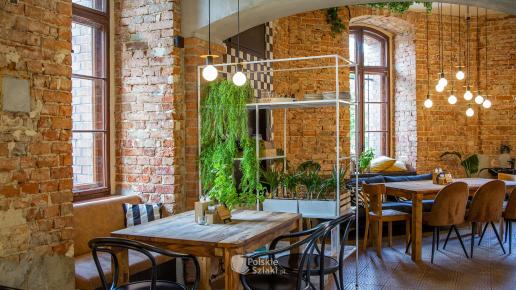
15. Villa von Richthofen
This interesting, although today heavily damaged building was erected in the second half of the 19th century. In 1901, it was bought by the von Richthofen baronial family, who came from Wrocław. His father was an officer of the Świdnica garrison, his mother was a housewife. Their sons, Manfred and Lothar, initially studied at the local Evangelical Gymnasium, after which they were sent to the cavalry units. Both became airmen during World War I.
Manfred gained world fame and the title of a hunting ace of the skies. He shot down 80 enemy planes. He received the Iron Cross 1st class, and in 1917 the highest Prussian military decoration - Pour le Merite. This is, of course, the Red Baron mentioned earlier. He died in 1918 during an air skirmish in France, and was shot down by one of the Australian soldiers.
Brother Lothar also died in a plane crash in 1922. In 1933, the brothers' mother, Kunigunde von Richthofen, set up the Richthofen Museum in their villa, but its equipment was taken over by the Soviets in 1945 and deported to Moscow. Today, it is an ordinary residential building, somewhat forgotten, although a memorial stone in honor of Manfred von Richthofen has been preserved in the garden, funded by a contemporary Świdniczan.
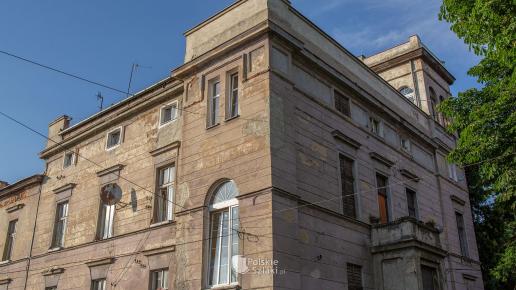
16. Reconstruction of the Battle of Burkatow
Every summer in Burkatów near Świdnica, a reconstruction of the famous battle is organized, which actually took place here on July 21, 1762, during the Third Silesian War. An armed clash took place between the Prussian and Austrian armies, and the battle ended with the defeat of the Austrians and their retreat.
We had the opportunity to see this reconstruction and it made a great impression on us, the bang was huge, the cannons fired from both sides, and between them the actions of the troops were visible. Even women were among the soldiers 🙂
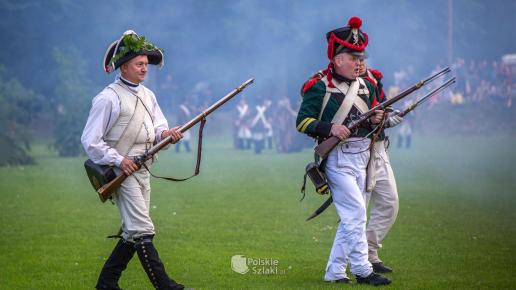
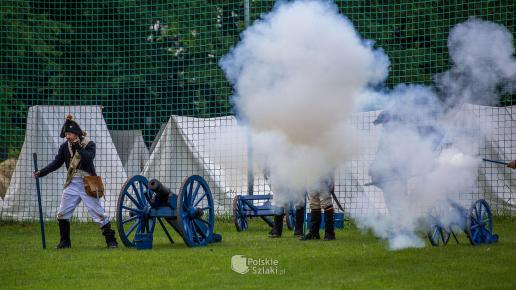
Where to eat in Świdnica?
Świdnica turned out to be extremely delicious, this city surprised me very positively in terms of cuisine. I can definitely highly recommend the Italian Restaurant Tower in the historic water tower (3 Nauczycielska Street). It's just delicious here, plus a great loft décor.
Cafe Fosa is also very tasty, also with Italian cuisine (9 Konopnicka Street), beautiful decor and a cool, youthful atmosphere. At the Market Square, I can recommend you the Chocoffee café, where not only a lot of coffees to choose from and desserts, but also local chocolates, including the one called Red Baron.
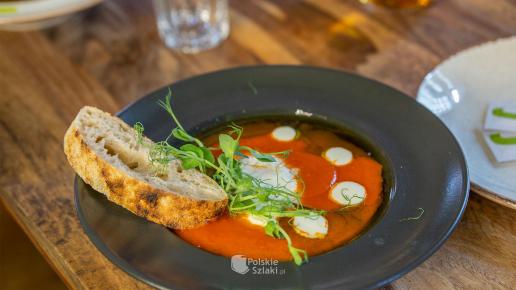
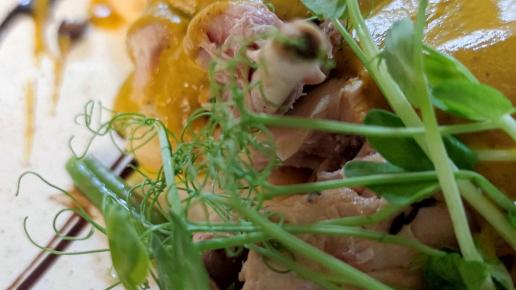
Świdnica accommodation
We also had an exquisite meal at the Park Hotel (20 Pionierów Ziemi Świdnickiej Street), where we additionally spent a quiet and comfortable night, in a double bed in a turret😉 The luxurious Red Baron Hotel is also worth noting.
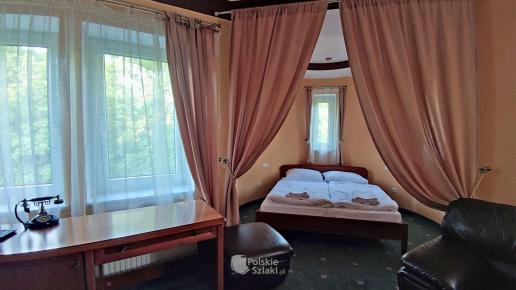
What to see in the area?
Świdnica lies in the heart of the very attractive Lower Silesia. Around you will find a lot of interesting places to visit. Very close to the famous Ślęża Mountain - a beautiful place for a weekend walk, with wonderful views. Not far from Świdnica, there is also the extremely popular Książ Castle - the third largest castle in Poland, as well as the Old Mine and the Porcelain Museum in Wałbrzych. Something nice for everyone. And if you want to try a slightly further trip, I recommend the Sky Walk tower in Świeradów and Świeradów Zdrój itself, which is a very atmospheric spa.
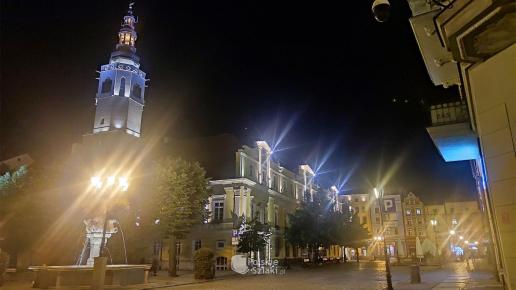
History of Świdnica
The history of Świdnica and the areas where it lies today is long. This area was inhabited already in prehistoric times, as numerous archaeological finds tell us, e.g. the famous Świdnica fibula from around 1000 BC or iconic figures found in the vicinity of today's cathedral. Then, in these areas, and more specifically in the area of Garbarska and Równa streets, a Slavic settlement was established, which gave rise to the city. Świdnica was located near this settlement, in the middle of the 13th century, under German law. It was most likely an initiative of Prince Henry III the White. The origin of the name Świdnica, from the word svida, i.e. willow, is also probably Old Slavonic.
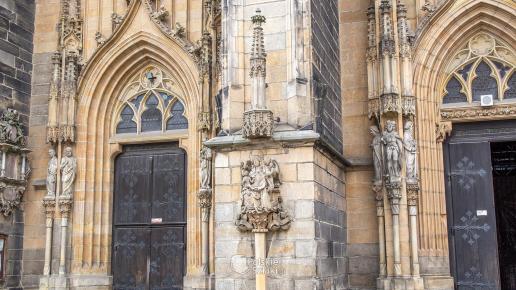
The city became a beer
Świdnica developed rapidly thanks to the privileges granted by the Dukes of Wrocław. Even then, in the 13th century, residents could sell beer and wine in barrels. And it is known that Świdnica was famous for beer in the Middle Ages. In the fourteenth century, Świdnica was the capital of a separate principality. At that time, trade flourished here, and Świdnica merchants, who had stalls on the market, were famous in Europe. At the end of the Middle Ages, Świdnica was the second largest and most important centre of Silesia.
Its importance was evidenced, among others, by the existence of over 20 churches and chapels and two monasteries. In 1471, there were 50 craft guilds in the city, and additionally the city was famous for the famous Dungeon - a great cannon. It weighed 5500 kg, and the stone balls loaded into it - 160 kg. It was often borrowed by Czech kings to break down defensive walls.
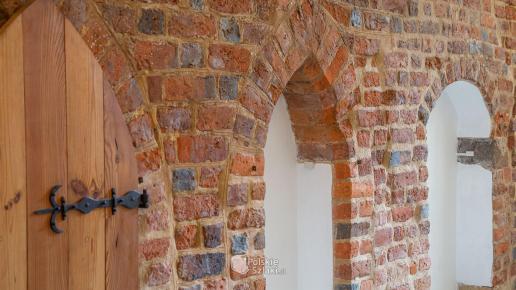
Building the Church of Peace
In the sixteenth century, Świdnica was affected by the Reformation and most of the inhabitants accepted the Lutheran challenge, but in 1526 Świdnica fell into the hands of the Austrian, Catholic Habsburgs, as a result of which religious tensions and the famous Thirty Years' War occurred. It brought poverty and pestilence, which wiped out the city quite strongly. After the war, evangelicals were persecuted and all their churches were taken away, but this is the moment when the most famous monument in Świdnica was created.
The Peace of Westphalia allowed for the construction of an evangelical church outside the city walls, made of impermanent materials. It was supposed to be an affront, and so the real pearl was built, i.e. the Church of Peace in Świdnica, which bears the call of the Holy Trinity, but has retained the name Church of Peace since the time of the Peace of Westphalia. It was built very quickly, in the years 1656-57, initially without equipment.
Świdnica Fortress
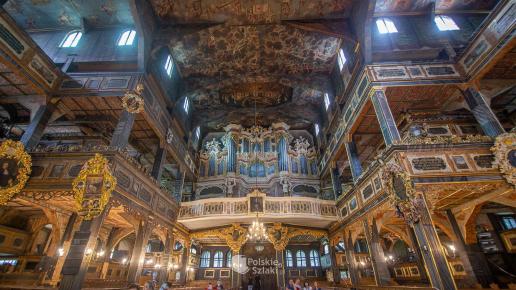
In the 18th century, the Silesian Wars between Austria and Prussia were fought in Świdnica, after which Świdnica finally fell into Prussian hands. In the years 1747-54 Świdnica, by order of King Frederick II, became a fortress. The Germans ruled over Świdnica until 1945, when the Polish population, including repatriates from the east, began to come here.
Świdnica expanded its borders and gained several new settlements, while the Old Town suffered greatly at that time, when about 400 tenement houses, including historic ones, were demolished. This was the case, among others, when the Town Hall Tower collapsed in 1967.
Revitalization of the Old Town
It was only after 2010 that the market began to be revitalized with proper care. The tower was rebuilt and many preserved historical tenement houses were renovated. In 2001, the Church of Peace was inscribed on the UNESCO List, and in 2017, the Church of Peace and the Cathedral were included on the presidential list of Historic Monuments.
Video with the most beautiful attractions of Świdnica
Also watch our video about this beautiful city 🙂
